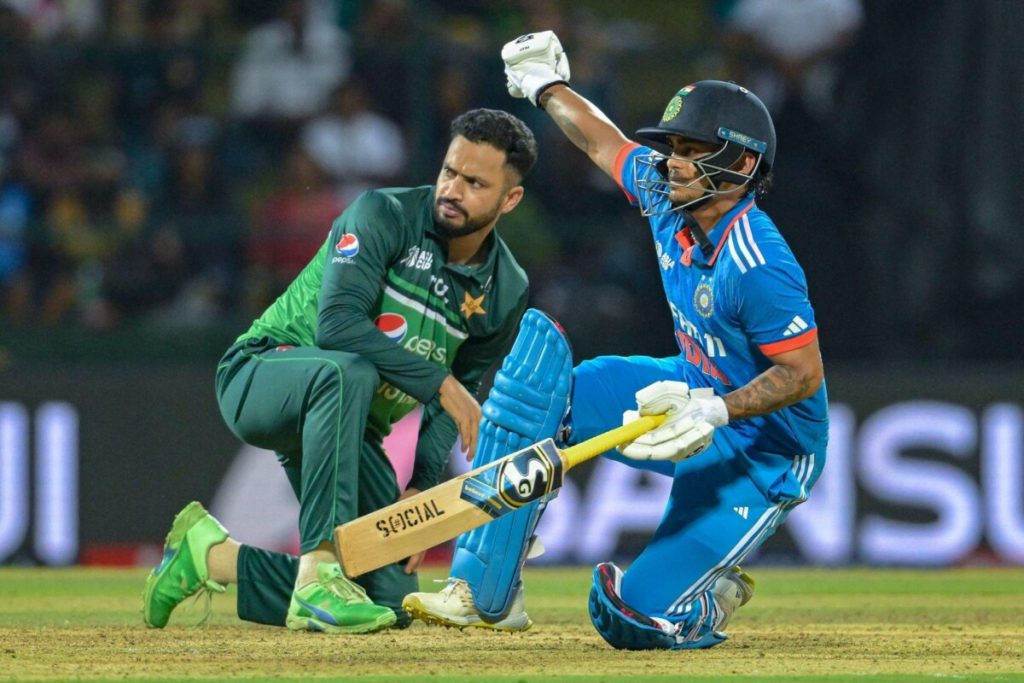The long awaited Asia Cup encounter between India and Pakistan may have ended without producing a result but both teams have got a great learning experience from this match. There is no doubt that Indian batters have aced their game against the spinners but at the time, their troublesome batting against pace and hit the deck bowlers may have put the matter out openly that something needs to be done about it.
India’s Struggle Against Shaheen & Co.

Shaheen Shah Afridi has exposed the weakness of Indian batting order. The tall left armer, as it was being speculated, troubled the Indian top order with seam movement early in the innings. Rohit Sharma and Virat Kohli fell to his trap as with all their experience failed to anticipate to tight line and lengths Shaheen was bowling.
ICC men’s ODI World Cup is not so far away, it might create a learning curve for Indian batters that even though defence and skillful negotiation might be a way to see off threats like Shaheen Shah Afridi but from the bowling perspective, it only takes an excellent to get the job done. So, there is a very thin line between trusting your defence and allowing the bowler to continuously test your defence.
Naseem Shah proved to be another threat, for first few overs, it was only Naseem Shah and Mohammed Rizwan who were playing, Shubman Gill stood in the middle bemused and not knowing which way bowl is going to move. This is a bad sign because the pitches aren’t always going to be batting friendly and when the pitch indicates that bowlers will have the upper hand in the game, then comes the real test for batters.
If Shreyas Iyer had only one weakness that everyone knew, it was his struggle against rapid bouncer. We saw it England and now upon his return to the team, Haris Rauf exploited his weakness instantly in his favour. A real learning for team India especially, playing in away conditions, it is always helpful to test your strength, ability and depth in challenging conditions.

Fielders let down Pakistan and Babar’s captaincy
Pakistan is an average fielding unit if one or two individuals are excluded, it has been proved against India that even if Pakistan are on high side of the game, their fielding can really bring them down. The disadvantageous aspect od bad fielding is that it disturbs the rhythm of whole team starting from the bowler. Their mistakes were quite basic ones, it is expected from a professional team to maintain high standards in a big tournament.
Because fielding is a very sounding aspect of the game, not much spoken about but in a given circumstance, it can prove to be match changing cause so in this section, Pakistan has to work on its game. The kind of bowlers they have got, a fine fielding unit will add another useful dimension to their game.
Babar Azam is mostly a tactical captain, he believes in taking decisions according to the situation. However, in a high pressure game against India, his captaincy seemed a bit worn out when Pakistan was all over India. Pakistan had India at 70 for 4 because of its pace unit and yet Babar Azam decided to go with spinners. It was a bad decision for two reasons: 1) Indian batters will always prefer spinners over pacers, that’s same as feeding their strength 2) the pitch wasn’t doing much for a spinner, it was clearly visible.
Babar Azam was quite conversative about his choices, he wanted to use his resources but in a modern game setting, there is no fix course of the game unlike traditional one, decisions are made on the spot, depending what the situation demands.
Both teams had something to learn from this game. The Pakistan pace battery can’t be taken lightly by any means, they deserve respect but in game, the batters have to find a way to dominate them, that’s where real challenge comes.

